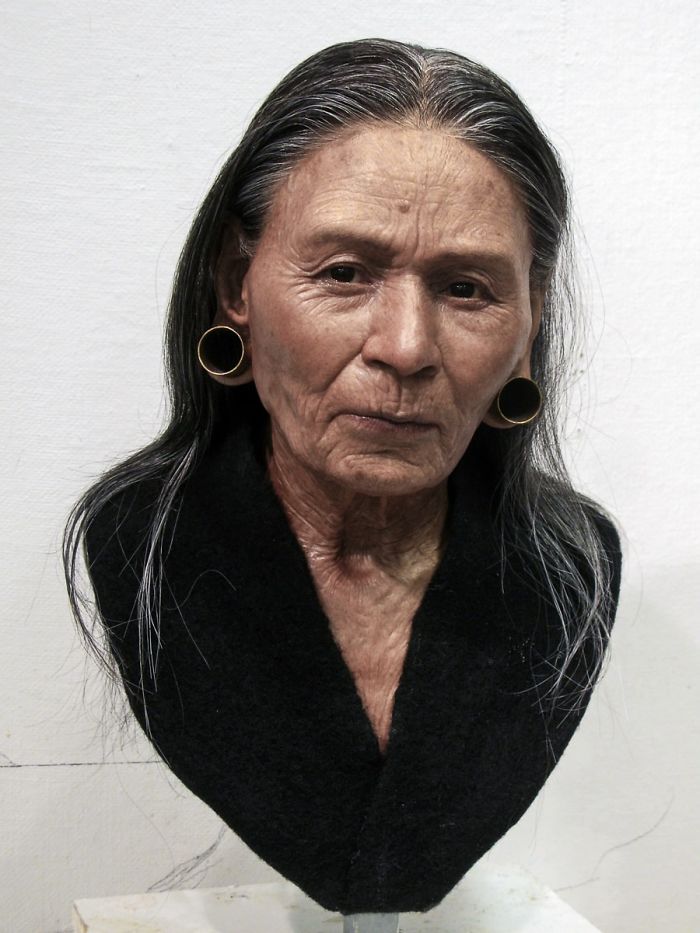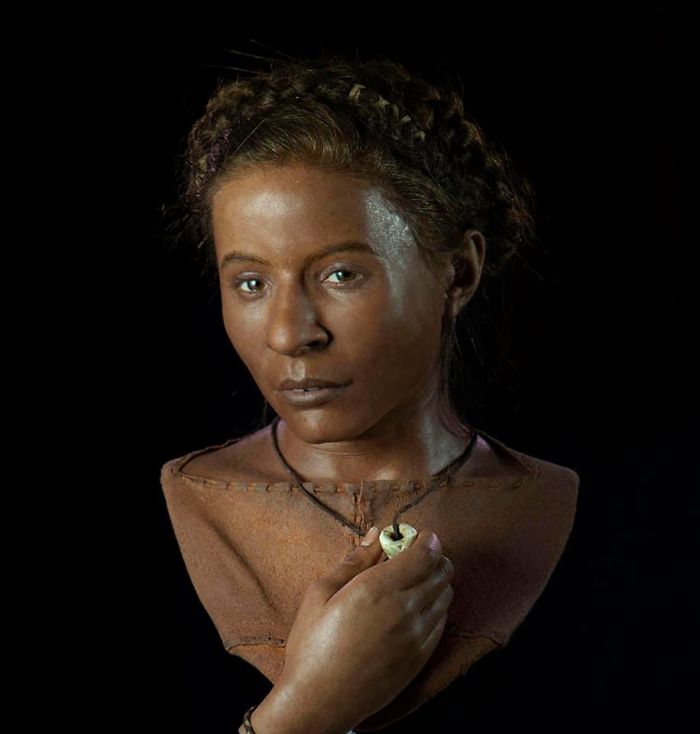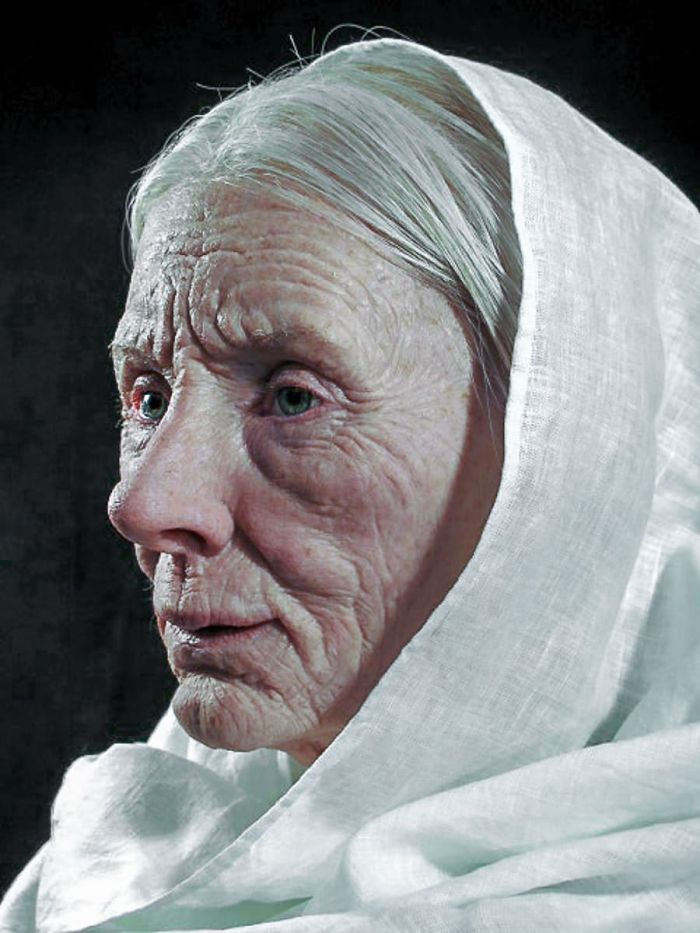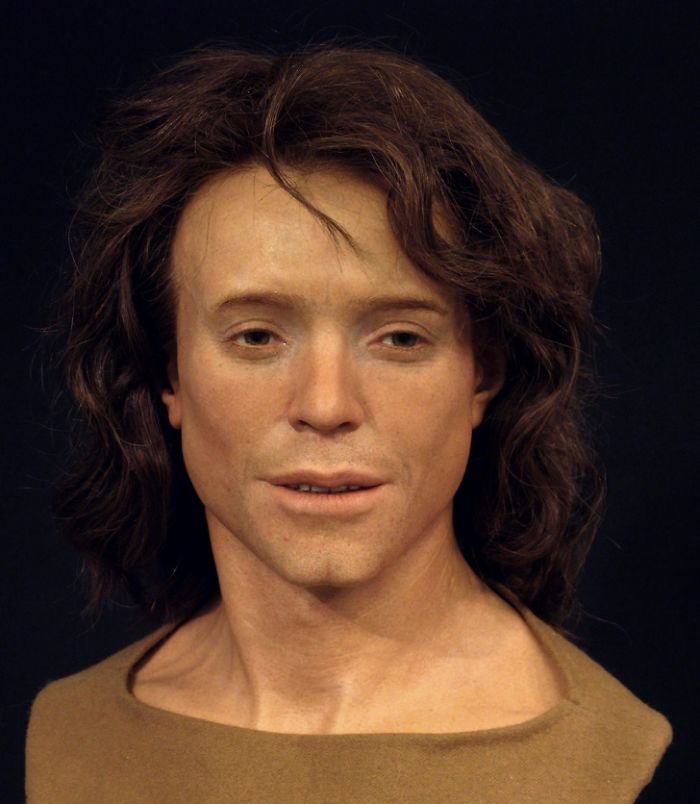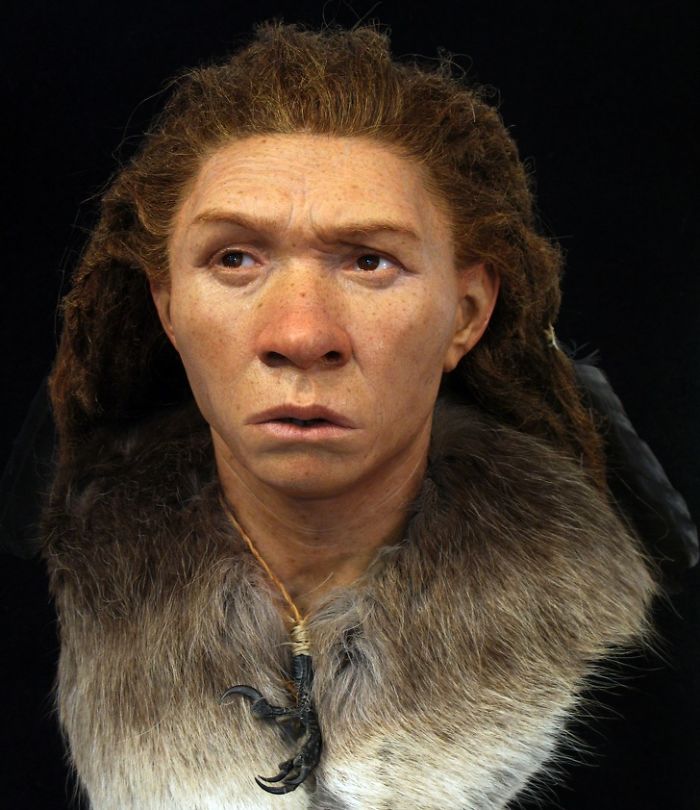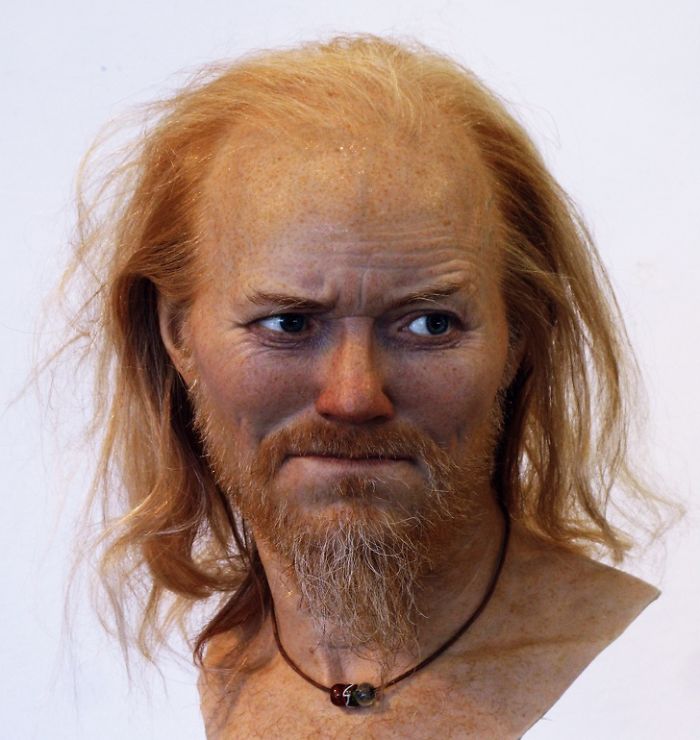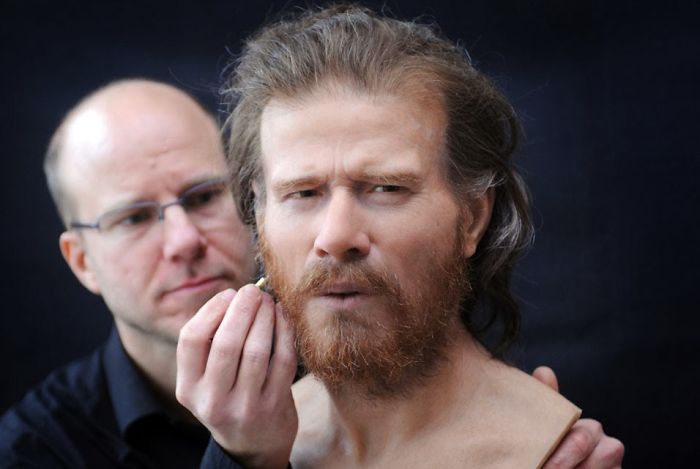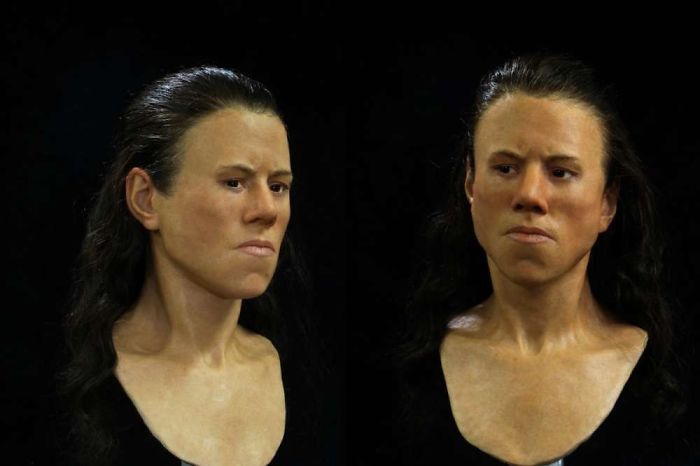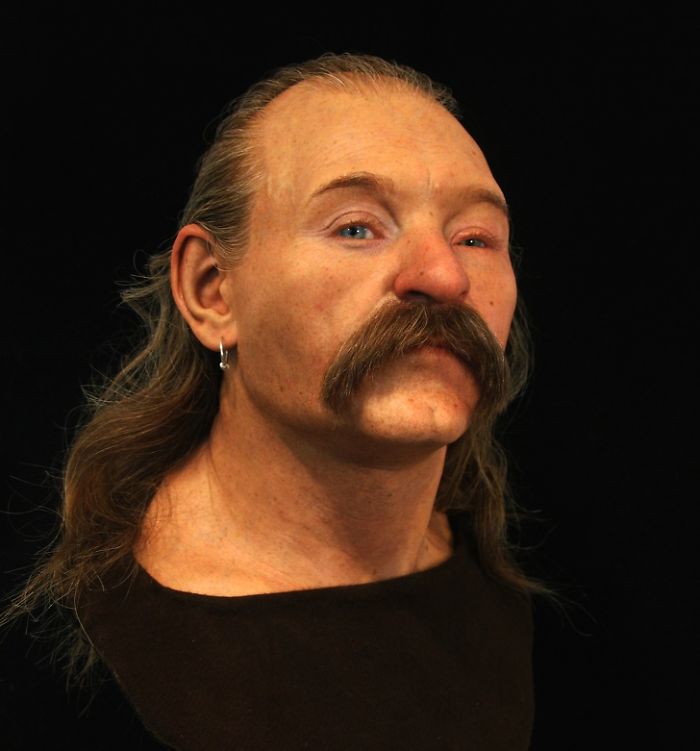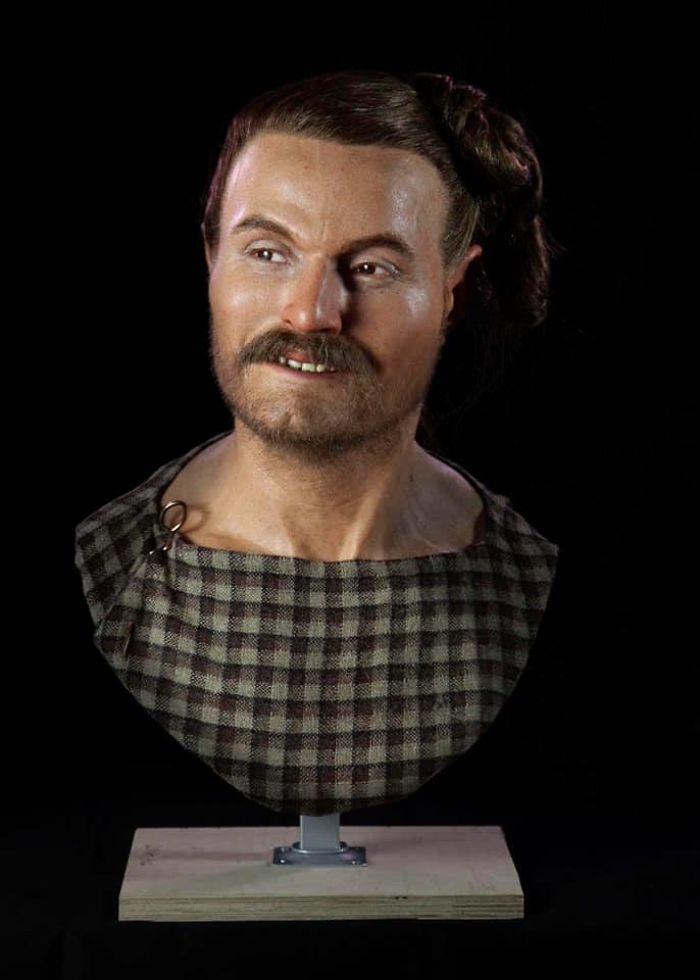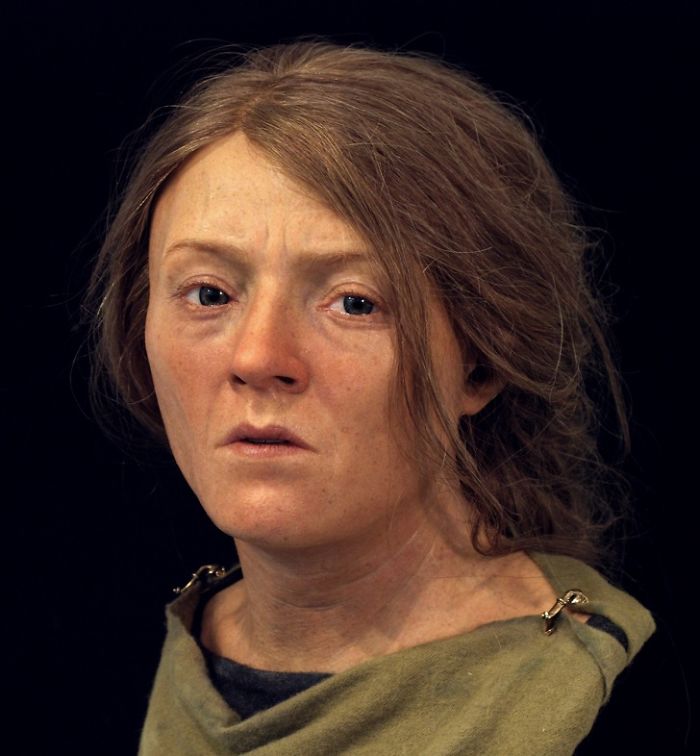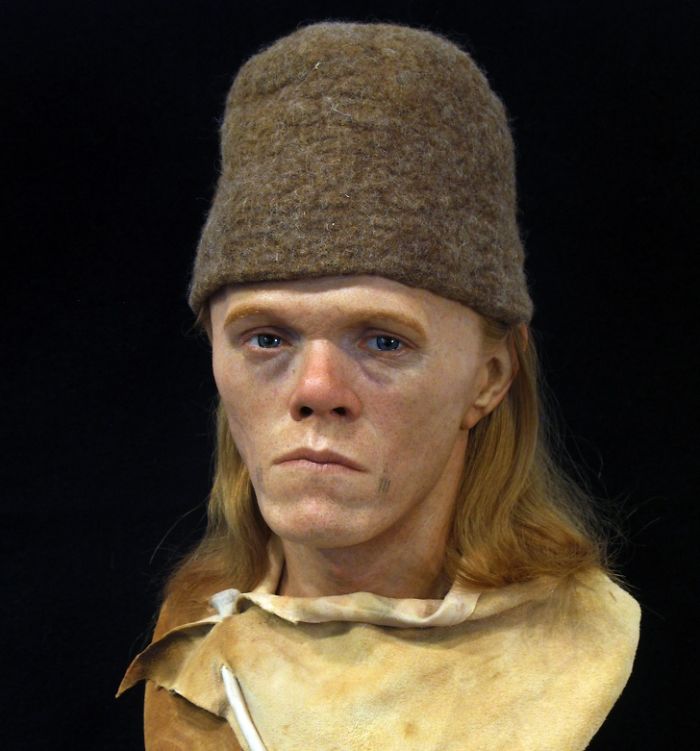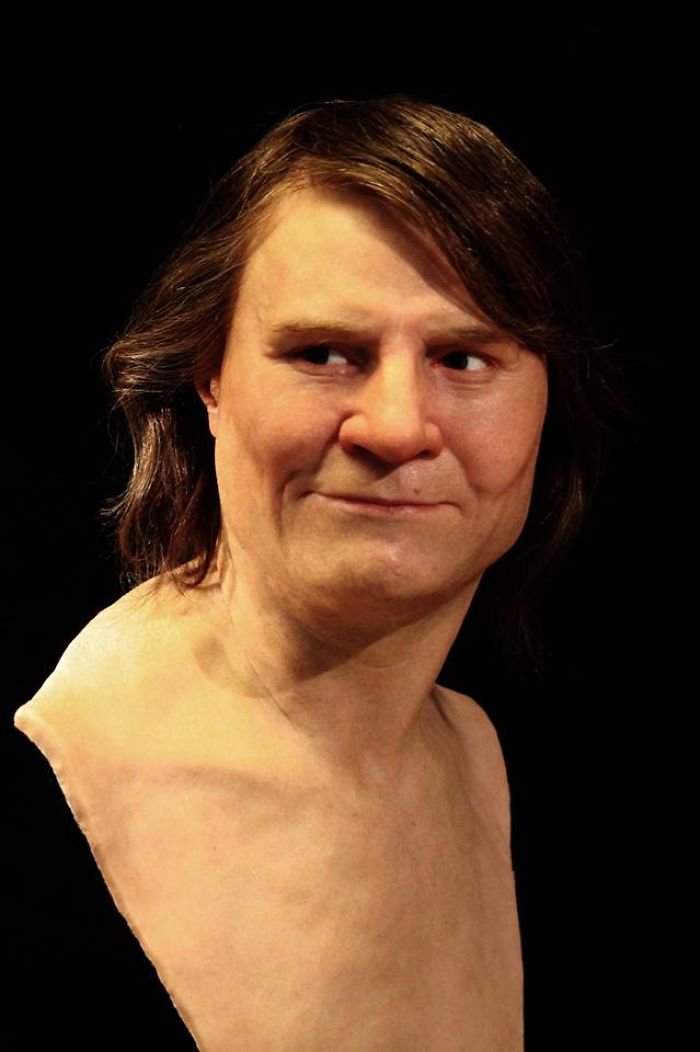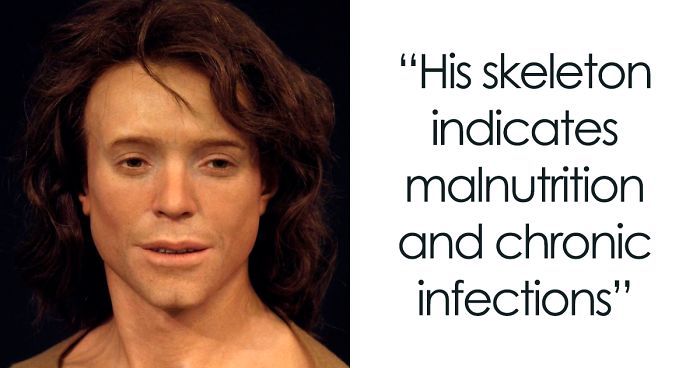
1.2Mviews
Archaeologist Shows How The People Who Lived Thousands Of Years Before Us Really Looked And The Result Is Amazing
The skill of some forensic artists, professionals who are dedicated to the Facial reconstruction of the deceased, is awe-inspiring. This time, we want to talk about one professional in particular who, unlike most in forensic science, did not resort to using a computer-aided approach, but instead used his hands.
For Oscar Nilsson, a Swedish archaeologist and sculptor specializing in the reconstruction of human faces, the number of hours spent in each rebuilding could easily add up to 200. Of course, Nilsson does use 3D-printed skulls of his muses to preserve the original skeletal excavations; however, the rest of face sculpting is done by hand.
In 1996, he opened a company called O.D. Nilssons. The company collaborates with museums around the world, helping them restore the faces of people whose graves were discovered during archaeological excavations. Facial reconstruction doesn't only require an artistic touch, but also a vast knowledge of historical facts to make the people seem as natural as can be. "The human face is a motif that never ceases to fascinate me: the variation of the underlying structure as well as the variety in details seem endless. And all the faces I reconstruct are unique. They are all individuals" - says the artist on his site.
More info: Facebook | Instagram | youtube.com | odnilsson.com
This post may include affiliate links.
Huarmey Queen
In 2012, in the north-west of Peru, a tomb was discovered during excavations by a Polish archeological group. The burial relating to the Indian culture of Wari (later the Empire of the Incas), was a real find for scientists because it was not looted. In the tomb were found the remains of 58 noblewomen of different ages, buried with extraordinary luxuries.
One woman, in particular, nicknamed Huarmey Queen, was buried more extravagantly than others. She was laid to rest in the company of jewelry, and other luxuries, including gold ear flares, a silver goblet, a copper ceremonial axe and, among other things, expensive textiles. In those times, textiles were considered more valuable than gold and silver due to the amount of effort required to weave one. It would sometimes take two to three generations to weave.
After careful examination, it was revealed that while Huarmey Queen spent most of her time sitting, she put her upper body to great use - weaving. It was also evident that this woman was highly praised for her expertise in the subject as her resting place was filled with weaving tools crafted out of gold.
A Young Woman Who Lived In The Stone Age About 5500 Years Ago
This girl died at the age of 20. She was buried with a baby on her chest. Probably, her death was caused by difficult childbirth. The DNA is not so well preserved, but from other discovered graves of that period, it can be said that the people who lived in Brighton (United Kingdom) were not white. Their skin color was similar to that of modern people from North Africa.
Estrid Sigfastsdotter
It is assumed that this is Estrid Sigfastdotter, who lived in the XI century AD. She was an influential and rich woman who lived near Stockholm, in Taby. A series of runestones found in the burial site tells about her life and family.
She lived a very long life for those times - about 80 years. This is despite the fact that in the Viking Age, life expectancy was only 35 years. The appearance of the woman was restored by the remains found near the runestone, established in honor of her first husband, who died in Byzantium. Probably, Estrid was engaged in the improvement of her native land, the construction of roads and bridges.
Some actually reached the age of 90 or more. A low life expectancy is because many died young as children, in childbirth, malnutrition, escapades, accidents and so on.
Adelasius Elbachus
A young and handsome man from Switzerland who lived in the VIII century AD was dubbed Adelaziy Elbakhusom (Adelasius Ebalchus) by researchers. His skeleton indicates malnutrition and chronic infections. But, contrary to this, he had healthy, even and beautiful teeth, which is rare for that time. That is why he was made smiling.
Neanderthal Woman
This lady lived about 45-50,000 years ago. Her remains were discovered during excavations in 1848 in Gibraltar.
On his Facebook, archaeologist Oscar Nilsson notes: "Finally a few words on something I thought of and struggled with, as I saw this Neanderthal face take shape. How "human" should this face appear? They were not Homo Sapiens after all. I came to the conclusion that she must have a human glimpse in her eyes. As recent research show, Europeans share around 2-4 % DNA with Neanderthals. So they must have been so much alike us, otherwise, the offspring would not have been fertile.
It is interesting to see how the image of the Neanderthals has changed over the years: from being a drooling savage to a highly-skilled competitor to us. Worth to note is also that this new image coincides with the insight that we Europeans share 2-4% DNA with the Neanderthals."
There are people with these same features. A guy I worked with could be her son.
Viking
The man, who allegedly was a Swedish Viking, lived at the beginning of the XI century. For the first time for the reconstruction of the Viking image, it was possible to collect the necessary amount of DNA to recreate the skin, hair, eyes. The man had red hair, blue eyes, and fair skin. He died at the age of 45.
Primitive Neolithic
Constructed using forensic evidence derived from skeletal analysis, the face is of a 25- to 40-year-old slender man born around 5,500 years ago.
This Is The Face Of A Teenager Who Lived 9,000 Years Ago
At 7000 years before Christ, Avgi was an 18-year-old girl. She lived where modern Greece is today, and witnessed the historic moment when societies began trade hunting for technological inventions, kicking off the agricultural revolution.
Mom! You just don’t get the agricultural revolution! I am going to plow fields with Gerrrgh. Hunting and gathering is for squares. I don’t care what you say b*tch!
A Man Who Lived In Britain In The Saxon Era
At the time of his death, he was about 45 years old. His bones suggest that he was a very strong man. Due to permanent abscesses, the man lost a lot of teeth, as well as part of the upper jaw. It is possible that he died from the next inflammatory process. He also had traces of injuries resulting from violent acts. Perhaps, this man was a soldier when he lived.
Birger Jarl
The ruler of Sweden from 1248 until his death on Oct. 1, 1266, in Västergötland, Sweden.
A Man Who Lived In The Iron Age In Britain
His bones indicate that he lived about 2,400 years ago, and he lived well. The man was strong, well-built and healthy, but, like many people of that time, died quite early - at the age of 24–31 years. This person had pleasant features and a unique tooth structure - diastema, or shcherbinka. And his folded hair has a resemblance to the hairstyle of Germanic tribes called “Swabian knot”.
"Diastema" means a gap in his teeth, and Shcherbinka comes up as a town in Russia. I got nothing. Gaps between one's teeth are not that unusual.
So does this mean that Celtic Britain was in contact with Germanic tribes? I always thought the Germanic tribes(angles, jutes and saxons) came into Britain about 800 years after this guy was born.
my nana is British and grew up in London and she told me that it was quite common for people in England to have an odd teeth structure- you should see hers!
It would be nice if the picture were lighter so you could actually see the Swabian knot.
In Polish it means a gap, or a backsight, which is that little slit in the back of the riffle you look through and want to it meet with frontsight when you’re aiming at something.
These are so touching! I feel like I’m reaching back into history and seeing their time periods come to life.
I wish the lighting was brighter so you could actually see the Swabian knot. :(
Daniel Radcliff mixed with actor who plays lieutenant Dan in Forrest Gump
what were germanic tribes doing in england unless trading 2400 years ago???
BINGO - thank you for pointing that out, I think the same thing LOL
Load More Replies...What scientific basis is there for saying that many people died quite early? If he was healthy, then if you were to factor out the young children who died, the average lifespan should have been in the 70s, just like any healthy group of people. Childhood diseases pushed the average lifespan down, and this has resulted in the myth that most people lived to be only 35 or so, and even that they were old men/women at that age. If that is the basis for that statement, then please stop perpetuating that myth.
Since he reconstructed the faces after the sculls I guess the bones told the experts at what age he died.
Load More Replies...Swabian knot? Weren't the peoples of the Iron Age British Isles actually Celts? Celts most certainly were not Germanic in either culture or language.
A front teeth gap seems common for modern Britons. I had one - my DNA is 72% British . isles
Woman Of Romano-British Descent
Her remains indicate that she lived a difficult life, engaged in heavy physical labor. She died at about the age of 25–35. During the excavation, nails were found near the body, which can symbolize various superstitions. For example, there is information about other dead of that period, in the graves of which nails were also found - along the perimeter and in the center. Probably, people believed that in this way, they would not allow the spirits of the dead to persecute them. Although, perhaps, this is simply the result of inadvertently closing the coffin.
A Man Who Lived About 3,700 Years Ago In The Bronze Age
The skeleton of this person showed evidence of malnutrition and iron deficiency anemia. The man died when he was about 25–35 years old.
The Medieval Middle-Aged Man From The Middle Of Sweden Is Finished
"Finally, the reconstruction of the medieval middle-aged man from the middle of Sweden is finished. Although now it turns out he may not be that medieval after all. C14-results indicates that he is from somewhere during the period of 1470-1630. However, analysis of his skeleton shows that he suffered from so-called os acromiale, a defect in the bones of the shoulder with a clear connection to heavy use of longbow-shooting! So, maybe it is possible to narrow the time span to 1470-1540, as longbows gradually fell out of fashion to use during the mid 16th century." - says the archeologist.
If you guys like this stuff check out History Cold Case on Youtube. There are only a few but they are really good and feature facial reconstructions of the cases and talks a bit about that process. Be warned though, some of them are not easy to watch.
Yaaaas saw this when I ran out of shows to watch -- you're my hero!
Load More Replies...The detail is amazing. I would love to see more about the techniques and materials involved in making theses.
I was looking for Ötzi but I didn't find him! But it makes sense I guess considering the existing recreations. Awesome work!
Yah me too. I would like to see a 3D representation of Otzi the iceman
Load More Replies...Stunning work. Thank you for sharing. Just amazing and so very well made.
Holy c**p these are super realistic. I can imagine so many horror movies. *maniacal laughter*
These are amazing. Sorry for the smart mouth remarks. Just pearls before swine, me included.
Really fascinating read! I would love to see more of these.
It's amazing that you could pass all these people on the street (except maybe the neanderthal woman) and not bat an eyelid...
I had a coworker many years ago who looked remarkably like many male Neanderthal recreations that I've seen.
Load More Replies...Watching those faces was quite an experience. They are more than just bones now
It's such an irony that Africa continent and Africans are look down on when civilization began there and every race has a tie to it
Great article. I love learning about how DNA is changing the way we see our ancestors and what they historically looked like. I would love to see more! On a side note, there are more and more unsolved cases, with DNA involved, that are being solved.
fascinating! More please! Would love to see the skulls before the reconstruction, too
Have they ever done one of these reconstructions from someone with known features (e.g. someone photographed from the 20th Century) where the model makers were not allowed to see the photograph first? It would be interesting to see how close they really get.
Très , très bien ; j'aimerais la meme chose en français ! - - - Très instructif ! - - - C'était Pierrette la néandertalienne ? Que de variétés , rien que pour la race blanche !
This is one of the most entertaining subjects I have seen on Bored Panda. Give us more!
These are amazing and really bring the people of those times to life.
Absolutely fascinating. Some of them look so familiar. One of them could actually my English teacher. From 30 years ago, not 3000.
I find this kind of interesting, not what people of a by gone era looked like, but more to the point of why people are amazed that they look just like people today.
Fantastic! I would love to see a reconatrucion of an Ancient Egyptian person made by these artists.
Does #14 look like the human version of Shrek with long hair or am I crazy
Archaeology just seems like a never ending guessing game of mights, may haves and could haves until we get some real evidence of what we're talking about.....
Fantastic. This reveals so much, including the state of the science.
Very inspiring! All this makes me imagine history like something live and actual. Great job!
These look SO alive! Some look like they would be interesting to meet.
I think that you ignored Africa, #periodT and Aftica is the cradle of Civilization🙏🏾
would be nice to see the lovers of valdaro https://en.wikipedia.org/wiki/Lovers_of_Valdaro
Was anyone here also a fan of the show "Meet the Ancestors" by Julian Richards? I was addicted to that show!
Anyone else look at artifacts in a museum and wonder what the owner looked like?
Cheque ODNilsson on Facebook and/or this link. https://www.odnilsson.com/ to see more. :-)
Possible that Neanderthals and humans looked the same 50 thousand years ago. As different as me and my brother.
How can something be 7000 years before Jesus? The world is only 6000 years old
Please do tell us how you know better! Show us your credentials first, though.
Load More Replies...If you guys like this stuff check out History Cold Case on Youtube. There are only a few but they are really good and feature facial reconstructions of the cases and talks a bit about that process. Be warned though, some of them are not easy to watch.
Yaaaas saw this when I ran out of shows to watch -- you're my hero!
Load More Replies...The detail is amazing. I would love to see more about the techniques and materials involved in making theses.
I was looking for Ötzi but I didn't find him! But it makes sense I guess considering the existing recreations. Awesome work!
Yah me too. I would like to see a 3D representation of Otzi the iceman
Load More Replies...Stunning work. Thank you for sharing. Just amazing and so very well made.
Holy c**p these are super realistic. I can imagine so many horror movies. *maniacal laughter*
These are amazing. Sorry for the smart mouth remarks. Just pearls before swine, me included.
Really fascinating read! I would love to see more of these.
It's amazing that you could pass all these people on the street (except maybe the neanderthal woman) and not bat an eyelid...
I had a coworker many years ago who looked remarkably like many male Neanderthal recreations that I've seen.
Load More Replies...Watching those faces was quite an experience. They are more than just bones now
It's such an irony that Africa continent and Africans are look down on when civilization began there and every race has a tie to it
Great article. I love learning about how DNA is changing the way we see our ancestors and what they historically looked like. I would love to see more! On a side note, there are more and more unsolved cases, with DNA involved, that are being solved.
fascinating! More please! Would love to see the skulls before the reconstruction, too
Have they ever done one of these reconstructions from someone with known features (e.g. someone photographed from the 20th Century) where the model makers were not allowed to see the photograph first? It would be interesting to see how close they really get.
Très , très bien ; j'aimerais la meme chose en français ! - - - Très instructif ! - - - C'était Pierrette la néandertalienne ? Que de variétés , rien que pour la race blanche !
This is one of the most entertaining subjects I have seen on Bored Panda. Give us more!
These are amazing and really bring the people of those times to life.
Absolutely fascinating. Some of them look so familiar. One of them could actually my English teacher. From 30 years ago, not 3000.
I find this kind of interesting, not what people of a by gone era looked like, but more to the point of why people are amazed that they look just like people today.
Fantastic! I would love to see a reconatrucion of an Ancient Egyptian person made by these artists.
Does #14 look like the human version of Shrek with long hair or am I crazy
Archaeology just seems like a never ending guessing game of mights, may haves and could haves until we get some real evidence of what we're talking about.....
Fantastic. This reveals so much, including the state of the science.
Very inspiring! All this makes me imagine history like something live and actual. Great job!
These look SO alive! Some look like they would be interesting to meet.
I think that you ignored Africa, #periodT and Aftica is the cradle of Civilization🙏🏾
would be nice to see the lovers of valdaro https://en.wikipedia.org/wiki/Lovers_of_Valdaro
Was anyone here also a fan of the show "Meet the Ancestors" by Julian Richards? I was addicted to that show!
Anyone else look at artifacts in a museum and wonder what the owner looked like?
Cheque ODNilsson on Facebook and/or this link. https://www.odnilsson.com/ to see more. :-)
Possible that Neanderthals and humans looked the same 50 thousand years ago. As different as me and my brother.
How can something be 7000 years before Jesus? The world is only 6000 years old
Please do tell us how you know better! Show us your credentials first, though.
Load More Replies...